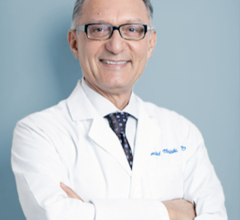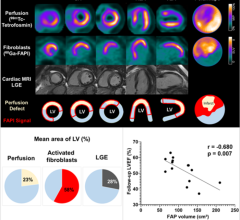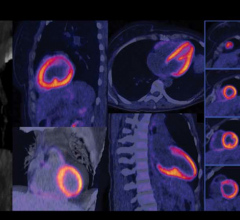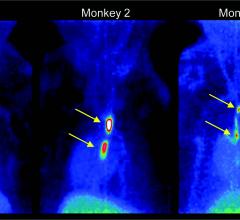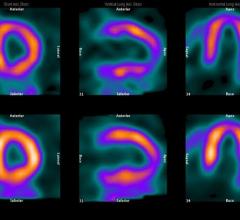
Located in bustling New York, Mount Sinai Heart keeps pace with the latest technologies.
New York’s Mount Sinai Heart has it all: a star-studded line-up of internationally renowned physicians, scientists and educators, cutting-edge research and unparalleled clinical services. Their secret to success — an integrated approach to cardiovascular healthcare that makes it all possible.
The recently inaugurated center is lead by former president of the American Heart Association and president of the World Heart Federation, Valentine Fuster M.D., Ph.D.
Mount Sinai is a leader in successful noncoronary interventions, such as mitral and aortic balloon valvuloplasty and alcohol septal ablation for obstructive hypertrophic cardiomyopathy, as well as coronary stenting and interventions. The hospital also performs the highest number of rotoblations in the country.
“If you are a patient I want you to come here knowing that we have the highest skill and that you will leave saying that this is the place that took care of you and you feel good about it,” said Dr. Fuster. “Everything we do is just for the patients.”
And there have been many, many successful patient outcomes. In the last year alone Mount Sinai Heart has performed over 500 interventions, with only three patients undergoing for emergency bypass surgery.
“Besides doing research and some 500 plus interventions, we have established ourselves as a leader in interventional cardiology in the northeast, especially in New York and the tri-state area,” said Samin Sharma, M.D., director of Interventional Cardiology and Cardiac Catheterization Laboratory, co-director of the Zena and Michael A. Wiener Cardiovascular Institute and professor of Medicine.
Dr. Fuster agrees, adding, “The people we have recruited are the top in the country. It is a big investment, and I think New York is the right city to do this in. New York moves very fast, and if you have something good, interest comes rapidly.”
Integration: A Finely Tuned Machine
According to Dr. Fuster, Mount Sinai was one of the first centers to integrate various specialties nearly 10 years ago. It is this idea of integration that has been translated into Mount Sinai Heart’s philosophy and approach to cardiac care.
“What we are talking about is a very elaborate system. [Mount Sinai Heart] is a center of integration of clinical [work] and research, all together,” said Dr. Fuster. “Patient care here is very close to the researching enterprise. It is all one entity. The integration of all clinical services — with research enterprise, with top people and moving into the transitional era — is what Mount Sinai Heart is all about and it’s very exciting.”
“We work in a collaborative way with our colleagues and really have the cutting-edge technology and the know-how to refer our patients to the best therapies possible,” said Michael Farkouh, M.D., director of Cardiovascular Clinical Trials at Mount Sinai Heart and associated professor of Medicine.
Physicians at Mount Sinai Heart have many opportunities to interact with their colleagues in other fields, opening up lines of communication between invasive cardiologists, surgeons, noninvasive cardiologists and other specialists.
“There is an incredible degree of rivalry between radiology and cardiology across the country in terms of techniques,” said Dr. Fuster. “I don’t think that is going to be the case here because we are all working together.”
Dr. Fuster believes that patient outcome relates to certain factors that Mount Sinai Heart offers. These include the integration of hospital personnel, standing at the forefront of many areas of research and a feeling of pride that both personnel and patients feel at Mount Sinai Heart.
“When people feel that they are part of an enterprise it creates a sense of pride that is really not tangible, but that makes people feel good about being in a place,” said. Dr. Fuster. “What I am describing is very unique actually.”
According to Dr. Sharma, by having a team atmosphere, personnel at Mount Sinai Heart are able to tackle difficult cases with confidence and experience successful patient outcomes.
“Every time you have a tough case, complications can occur,” said Dr. Sharma. “You have to have your team work together because when things happen, everyone needs to be thinking together.”
The Technological Piece of the Puzzle
Though integration is what the hospital attributes most of its success to, having a state-of-the-art cath lab can’t hurt. In fact, Mount Sinai Heart has five of them, with a sixth on the way.
“New technologies have made our procedures safer and have greatly improved the success rate of our procedures. That is why we can do so many safely,” said Dr. Sharma. “That has allowed us to send patients home the same day. We know that once we have done the intervention, the patient is going to do just fine.”
Twenty-five percent of Mount Sinai Heart’s angioplasty patients go home the same day, and less than 0.1 percent have undergone emergency bypass surgery following intervention.
This rate of success is backed by five cath labs containing technology that includes Philips and Siemens single and bi-plane X-ray machines, Toshiba’s bi-plane X-ray machine, three iLabs for ultrasound imaging, a Spectranetics laser machine and a Tandem Heart life support system.
The list goes on to include Philips CT and flat panels and a custom report generation, digital archiving system by Softlink International and telemetry CCU monitors by Siemens and GE Healthcare.
“We are confident that we can open any type of blockage and open it safely,” he said.
According to Dr. Sharma, construction of the additional sixth cath lab will begin in January of 2008 and will include a single-plane X-ray machine equipped with peripheral procedures. It is expected to be fully functional by July 2008.
Dr. Fuster stresses that though Mount Sinai Heart utilizes the very latest technology, being willing to change is what is most important.
“The new cath labs need to have something that they didn’t have in the past and that is flexibility for new technology,” he said. “The question is not ‘what is there’ because what is there one year is obsolete five years later. They need to be flexible for change and changing technology.”
Groundbreaking Research Makes an Impact
As stated by Drs. Fuster and Sharma, clinical research is a cornerstone in Mount Sinai Heart’s integrated approach and success in healthcare. The flagship of such research is the Future Revascularization Evaluation in patients with Diabetes Mellitus: Optimal management of Multivessel Disease (FREEDOM) trial, which is expected to be the definitive study to determine the best clinical practice – balloon angioplasty with drug-eluting stenting or coronary artery bypass graft surgery – for this patient population.
“The FREEDOM study really encompasses the spirit of what we are trying to achieve at Mount Sinai Heart,” said Dr. Farkouh. “This study has brought together experts from cardiovascular surgery and interventional cardiology, but also from other disciplines such as diabetes and neurology.”
The study, which received a $25 million grant from the National Heart, Lung and Blood Institute, involves 140 centers worldwide and will begin recruitment in 2008. It should report in 2011, allowing the imaging of hundreds of patients to determine risk factor and outcome after five years.
Mount Sinai Heart is also spearheading other trials, including the Grenada Heart Project, an epidemiological study surveying the island of Grenada to evaluate patients who are at risk in a country that is developing and adopting western culture. The study, which involves 10,000 subjects, hopes to provide insight on how the epidemics of diabetes and heart disease relate to industrialization and how they can be prevented.
Though Mount Sinai Heart has not yet reached its one-year mark, it has already begun to change the way cardiovascular medicine is practiced. With the best technology and personnel, an integrated approach and the belief that research should always be close behind practice, the hospital isn’t skipping a beat on the path to total cardiovascular care.
“The soul of an enterprise is what makes the outcome the best,” said Dr. Fuster. “[Mount Sinai Heart] is a very ambitious project and an incredible investment. I feel very proud to be leading it.”

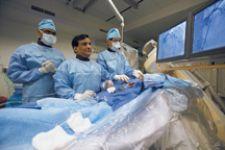
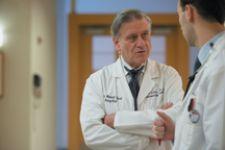
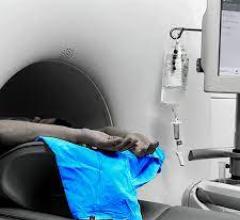
 October 05, 2023
October 05, 2023 
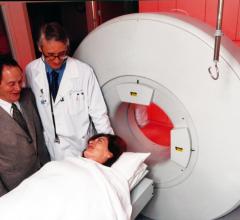
![Phase III clinical trial of [18F]flurpiridaz PET diagnostic radiopharmaceutical meets co-primary endpoints for detecting Coronary Artery Disease (CAD)](/sites/default/files/styles/content_feed_medium/public/Screen%20Shot%202022-09-13%20at%203.30.13%20PM.png?itok=2w6OoNd6)
